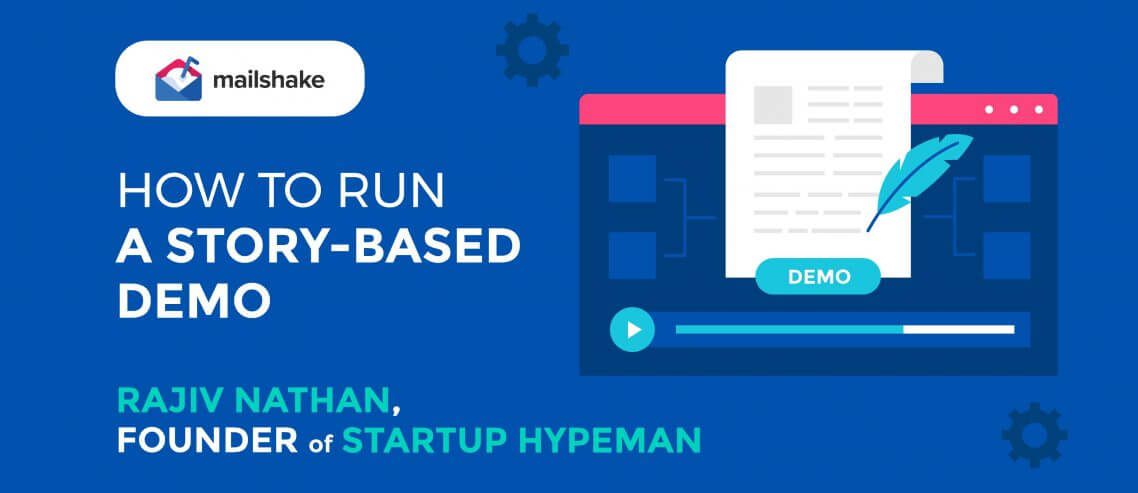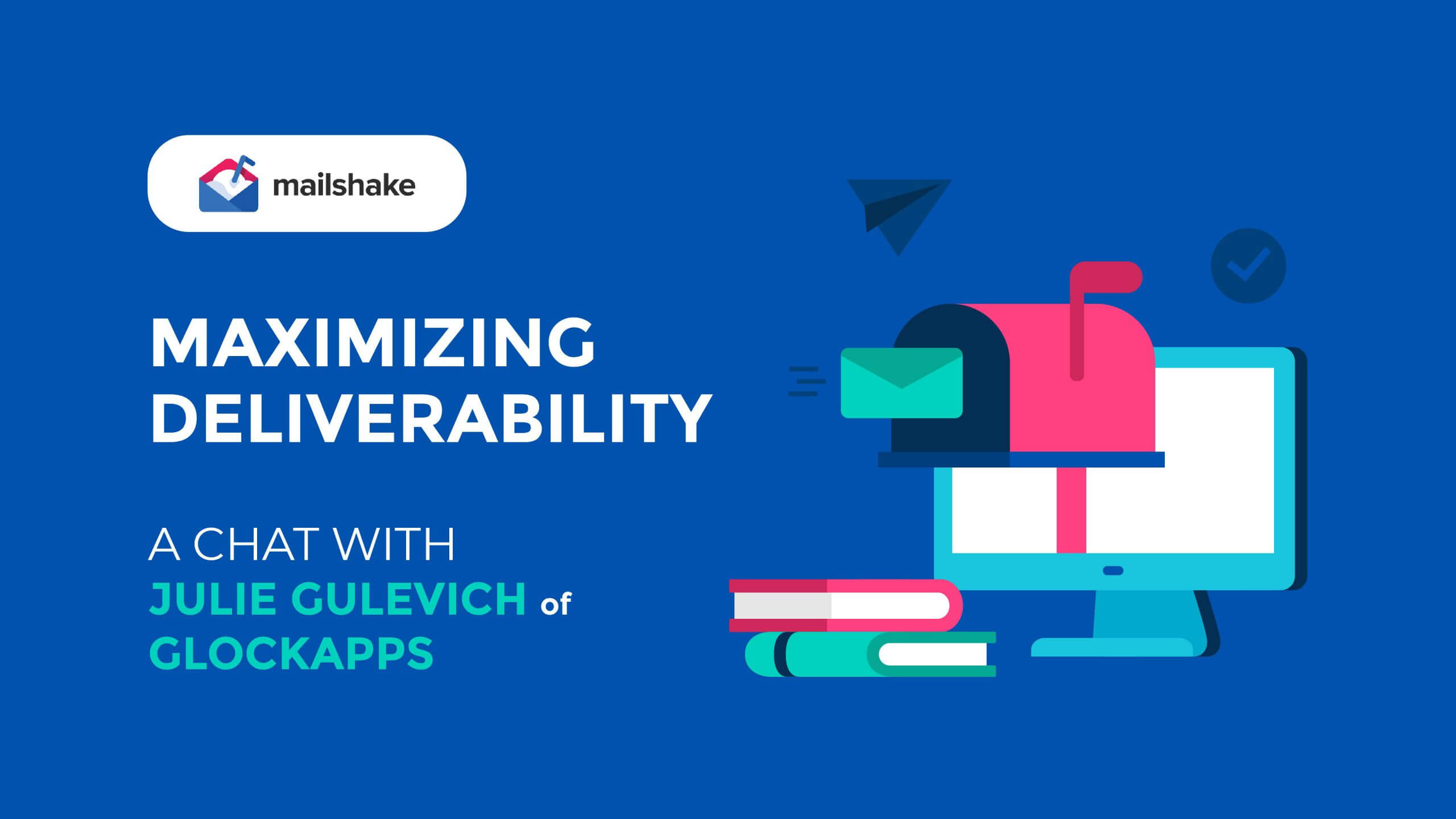How to Run a Story-Based Demo

Contents
Once you’ve booked a product demo call with a prospect, it’s tempting to mentally chalk it up as a done deal.
But there’s still a lot that can go wrong.
It’s highly unlikely that you’ll persuade your prospect to sign on the dotted line if your product demo is un-engaging, vague, or generic. That might sound obvious, but I’ve seen a lot of terrible demos. Trust me, this is a widespread problem.
So what can you do about it? I caught up with Startup Hypeman founder Rajiv Nathan (aka RajNATION), who explains how story-based demos can improve your conversion rate…
What Is a Story-Based Demo? [1:25]
Most brands treat demos as an opportunity to show off every possible aspect of their product. They’ve built it from the ground up, they’re proud of it, and they’re damn well going to tell you about it!
A story-based demo takes the opposite approach. Rather than being centered on the product, it focuses on a consistent narrative anchored on the customer’s needs.
Raj has developed the Superhero Strategy to explain the value of a story-based demo: “The idea is that you have to think of your brand as a superhero. Your company, your brand helps to save your target audience from something.
“But in order for a superhero to exist, there has to be three things in place first. Most companies try to be Batman and save Gotham on a sunny day when there’s nothing wrong. But for Batman to exist, you must first have:
- A damsel or a dude in distress;
- A village on fire; and then
- A superpower that can be activated
“And then your superhero can swoop in and save the day.”
What Are the Common Mistakes Salespeople Make on Their Demos? [3:37]
For a lot of salespeople, the product demo is a “40-minute highlight reel of all of their product features, going into the inner working of the admin dashboard, into every possible use case, and just over-explaining the product”, Raj explains.
But it’s not a product ad. Your prospect wants to know how the product will benefit them specifically. Make it simple for them to understand the value you add.
According to Raj, the biggest failing here is asking the wrong questions during the discovery phase.
“Many companies, many salespeople only ask a couple quick questions, mainly about their own solution: ‘How did you find us? What are you looking for in a [whatever product]? Great, awesome, let me show you the product now.’
“That takes up 5-7 minutes, then 33 minutes is spent after that just poring through the actual screenshare platform product demonstration.”
What Sort of Questions Should You Be Asking? [5:20]
So questions are important. But which are the right questions to be asking?
Obviously, it’ll depend whether you’re speaking to an inbound or outbound lead. From an outbound perspective, Raj recommends replacing your qualifying questions with disqualifying ones.
As an example, he notes that many sales teams use the BANT method:
- Budget
- Authority
- Need
- Timing
On the question of timing, most reps will ask a question like: “What’s your timeline for something like this?”
That’s all well and good, but it often doesn’t produce a completely honest response. “Not because they’re intentionally lying; more because they don’t know what their real timeline is,” Raj says.
This works much better when it’s flipped to a disqualifying question, he explains: “What you could ask at the start is: ‘Hey, how come we’re having this conversation right now, and not two months from now?’ That’s how you figure out the state of today.
“When you get toward the end and you have to figure out when they want to launch, you can say: ‘So from what you’ve told me, it sounds like about two months or so, is that accurate?’”
Can You Tell a Story Using a Sales Deck? [8:10]
When product demos are poor, the sales deck is often at least partly to blame.
But that’s not to say you can’t tell an engaging story with a sales deck. You absolutely can. It just needs to be “infused with narrative,” Raj explains.
That means taking your prospect on a journey by:
- Defining the current state of events (and getting them to agree that it’s accurate);
- Introducing a breakage or friction point;
- Explaining what will happen if nothing is done about it;
- Discussing the potential impact and results of finding a solution.
Then, and only then, you can introduce your company, explain how your product overcomes the challenge they’re facing and provide some examples of customer success.
“The first 60-70% of it, you haven’t even introduced your brand yet,” Raj points out. “You’re just building up the situation and the idea of doing something, so that when you do introduce your brand, it becomes the logical conclusion to this narrative that was built up.”
What Does a Story-Based Demo Look Like in the Wild? [13:16]
Raj has helped lots of brands build story-based product demos.
One of his favorite examples is Blueboard, an employee rewards and recognition platform. They’d been relying on an outdated demo process that was heavy on “this is us, this is what we do,” but light on “this is what it actually means to you, our prospect.”
With Raj’s support, they created a scenario-based buildup followed by a maximum 10-minute demonstration of the product.
“We took [prospects] through the mock user flow of an employee getting an email about something that’s cool and interesting, clicking on it, being surprised, and then picking the experience that would work for them,” Raj explains.
“The only thing we said after that was: ‘All of this you just do from a single admin portal in the back end, here’s the page, it’s really simple.’ That completely changed the perspective of the product, making it easier for that person to sell it internally to their stakeholders, the decision-makers, which made it easier for them to loop back in and want to advance the opportunity forward.”
Do you use story-based product demos? How do you do it and what benefits have you seen? Let me know in the comments:





